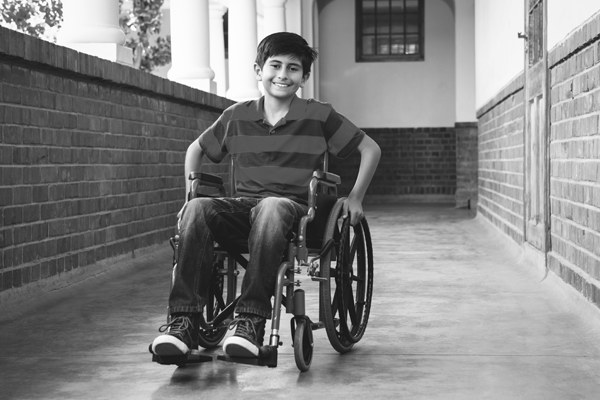Long-Term Treatment of Pediatric Chronic Inflammatory Demyelinating Polyneuropathy with Pulse Oral Corticosteroid Therapy
Long-Term Treatment of Pediatric Chronic Inflammatory Demyelinating Polyneuropathy with Pulse Oral Corticosteroid Therapy https://pediatricsnationwide.org/wp-content/themes/corpus/images/empty/thumbnail.jpg 150 150 JoAnna Pendergrass, DVM JoAnna Pendergrass, DVM https://pediatricsnationwide.org/wp-content/uploads/2021/03/pendergrass_01.jpg- April 06, 2021
- JoAnna Pendergrass, DVM
Pediatric patients with chronic inflammatory demyelinating polyneuropathy can benefit from the safety and effectiveness of long-term pulse oral corticosteroid therapy.
Chronic inflammatory demyelinating polyneuropathy (CIDP) affects the peripheral nervous system in children, causing weakness, sensory loss and depressed tendon reflexes. Pediatric patients with this rare, immune-mediated disease often undergo years of immunomodulatory therapy, with the standards of treatment being intravenous immunoglobulin (IVIg) and corticosteroids.
Both treatments, however, present challenges to patients and their families. With IVIg, for example, “Some children can become fearful of the IV and have side effects, including severe headaches,” says Anne Connolly, MD, chief of the Division of Neurology at Nationwide Children’s Hospital. Also, patients in rural areas often must travel long distances to receive IVIg treatment at a major medical center.
In children, daily corticosteroid therapy leads to bone fragility, linear growth stasis and excessive weight gain.
“We have had a lot of success, over many years, using pulse oral corticosteroid maintenance therapy to treat pediatric CIDP,” says Dr. Connolly, adding that this treatment approach has minimal side effects and costs far less than IVIg. This therapeutic approach involves administering twice-weekly oral corticosteroids.
Setty Magaña, MD, PhD, an attending pediatric physician-scientist at Nationwide Children’s and co-director of the hospital’s Neuroimmunology Program, notes that pulse oral corticosteroid therapy has also been used to treat central nervous system disorders, such as pediatric multiple sclerosis and transverse myelitis.
Dr. Connolly and her team conducted a retrospective study that evaluated pulse oral corticosteroid therapy in patients with pediatric CIDP. The study’s results, published in Muscle & Nerve, demonstrated that this therapeutic approach was safe and effective for the long-term treatment of pediatric CIDP.
The research team analyzed the medical records of 25 pediatric patients who were treated for CIDP at Washington University’s Neuromuscular Center between 2000 and 2018. Analyzed data included initial and maintenance therapy, disease course classification (monophasic, relapsing-remitting, chronic), adverse effects and long-term outcomes. All patients had at least 12 months of follow up, with a median follow up of 4 years.
Most patients (60%) had a relapsing-remitting or chronic disease course. Nearly 70% of patients received IVIg as their initial therapy, while 64% received pulse oral corticosteroids, either alone or in combination with other treatments (e.g., azathioprine), for maintenance therapy.
Regardless of treatment regimen, all patients demonstrated symptom improvement when examined at their final follow-up appointment, with 64% of patients having a normal exam. Notably, 40% of patients were weaned off treatment by a median of 3 years after treatment initiation.
Pulse oral corticosteroid therapy was generally well-tolerated and all patients maintained linear growth. Mild side effects on the days of treatment included irritability and insomnia. Only one patient discontinued the treatment because of the side effects.
The study’s retrospective nature limited the researchers’ scope of data analysis. For example, the lack of a standardized treatment regimen made it difficult to compare patients’ treatment regimens directly.
“Despite the limitations,” says Dr. Connolly, “the study demonstrates that pulse oral corticosteroid therapy is safer than daily corticosteroids and is as equally effective as IVIg.”
Adds Dr. Magaña, “For patients with CIDP whose first-line therapy was unsuccessful, pulse oral corticosteroids were effective and well-tolerated.”
Dr. Connolly is grateful to her co-authors Amanda Rogers, MD, and Craig Zaidman, MD, both at Washington University, for their collaborative efforts in the retrospective data analysis for the study.
Reference:
Rogers AB, Zaidman CM, Connolly AM. Pulse oral corticosteroids in pediatric chronic inflammatory demyelinating polyneuropathy. Muscle Nerve. 2020 Dec;62(6):705-709.
About the author
JoAnna Pendergrass, DVM, is a veterinarian and freelance medical writer in Atlanta, GA. She received her veterinary degree from the Virginia-Maryland College of Veterinary Medicine and completed a 2-year postdoctoral research fellowship at Emory University’s Yerkes Primate Research Center before beginning her career as a medical writer.
As a freelance medical writer, Dr. Pendergrass focuses on pet owner education and health journalism. She is a member of the American Medical Writers Association and has served as secretary and president of AMWA’s Southeast chapter.
In her spare time, Dr. Pendergrass enjoys baking, running, and playing the viola in a local community orchestra.
-
JoAnna Pendergrass, DVMhttps://pediatricsnationwide.org/author/joanna-pendergrass-dvm/
-
JoAnna Pendergrass, DVMhttps://pediatricsnationwide.org/author/joanna-pendergrass-dvm/
-
JoAnna Pendergrass, DVMhttps://pediatricsnationwide.org/author/joanna-pendergrass-dvm/
-
JoAnna Pendergrass, DVMhttps://pediatricsnationwide.org/author/joanna-pendergrass-dvm/
- Post Tags:
- Neurology
- Posted In:
- Clinical Updates
- In Brief










